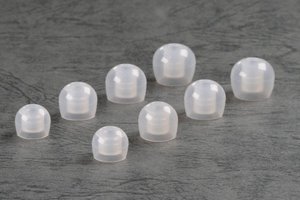If I may divert a little attention away from the H50 for a moment... (as excited as I am myself for the influx of first impressions

)...
Now that I've had the EST50 with me for a few weeks, I wanted to share some further thoughts:
Since I posted my initial impressions, I've swapped out the silver-plated copper TRI Through cable I was using for a 4N pure silver one from XINHS (
link) and the ePro EP00 horn tips for Azla Sedna Light Shorts.
In its current configuration, I would now describe the EST50 as a properly bass-boosted neutral tuning, and a clear shift away from its previously distinct L-shaped signature.
By properly bass-boosted neutral, I mean: falling more or less in the middle of the spectrum tonally (rather than leaning heavily warm and thick), crisp and extended treble that is
aligned with its mids (rather than taking a backseat to the rest of the frequency spectrum), and a strong, robust low-end that shows up with gusto only when called for (rather than appearing as an ever-present anchor).
Crucially, this tonal shift is accompanied by a not-insignificant improvement in technical performance across multiple areas: clarity, transparency, treble extension and detail, layering, incisiveness, low-level resolution.
At the risk of sounding hyperbolic, since I began my Head-Fi journey in 2007, I can really only recall having owned one other IEM (namely the Sony IER-M9) where I found myself so
consistently greeted with new layers of low-level details and information across my entire library. To put this in context, past IEMs I’ve owned include the UM MEST, Sony EX1000, Hyla CE-5, AK T8iE MKII, Fearless S8F, Moondrop Variations, and the ThieAudio Clairvoyance.
(Side clarification: The MEST is perhaps more resolving, but I do think a reasonable degree of its resolving capabilities owes itself to its specific tuning that prioritises—even exaggerates—the perception of clarity, and to an almost distracting extent. Subjectively, I found the resulting lack of cohesiveness and sense of realism to detract from my ability to fully enjoy or immerse myself in my music.)
When I bought the ISN EST50, I fully expected to be impressed as I was with the H40 by its rich, euphonic, and full-bodied tonality; its potent bass, and its expansive soundstage. I had
hoped it would be a reasonable upgrade technically. What I certainly did not expect, however, was to find myself waxing lyrical about its layering capabilities or its ability to resolve 'microdetails'. I didn't think I could be any more impressed than I initially was, but here I am.





















 )...
)...

